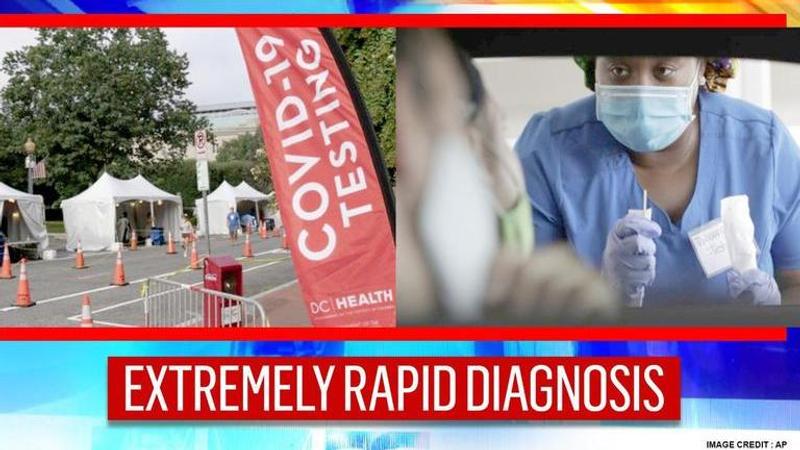Published 17:37 IST, October 15th 2020
COVID-19: Oxford scientists develop rapid diagnostic test to detect virus within 5 minutes
Innovative testing method did not require any lysis, purification, or amplification steps that were time-consuming in regular COVID-19 testing.

Advertisement
On October 14, UK’s University of Oxford scientists announced that its Department of Physics has developed an extremely rapid diagnostic test that can test the coronavirus strain in less than 5 minutes in a human body. In research that the university published in the preprint server for health sciences MedRxiv, the scientists said that the innovative testing method did not require any lysis, purification, or amplification steps that were time-consuming in regular testing. Researchers trained a neural network to differentiate SARS-CoV-2 from other respiratory pathogens like flu, influenza, seasonal viruses from the negative clinical samples.
The research for a promising alternative method of COVID-19 testing was funded by the Royal Society Dorothy Hodgkin Research Fellowship and was made possible with the use of commercial microscopes from Oxford Nanoimaging. The testing method involves taking direct throat swabs from COVID-19 patients, without any genome extraction in the samples that now require just short fluorescent DNA strands.
Scientists from @OxfordPhysics have developed an extremely rapid diagnostic test for Covid-19 that detects and identifies viruses in less than five minutes.
— University of Oxford (@UniofOxford) October 15, 2020
Read more here >https://t.co/aY7ubgPz3G
Oxford’s Nanoimaging instrument can detect the fluorescently-labeled viruses from the coronaviruses. Oxford revealed that the researchers also used the machine-learning software that will identify other viruses from the SARS-CoV-2 due to the difference in its chemistry, size, and shape. Scientists collaborated with doctors at the John Radcliffe Hospital in Oxford and ran a trial of the technique on COVID-19 patient samples, collected using the conventional RT-PCR methods.
“‘Unlike other technologies that detect a delayed antibody response or that require expensive, tedious and time-consuming sample preparation, our method quickly detects intact virus particles; meaning the assay is simple, extremely rapid, and cost-effective,” Oxford’s Department of Physics' Professor Achilles Kapanidis said in the release.
[The test uses a simple colour change to identify the presence of the virus. A positive sample changes from pink to yellow. Credit: Oxford Site]
To develop an 'integrated device'
A former researcher at Royal Society Fellow at the University of Oxford, now at Warwick Medical School, said that winters bring the unpredictable effects of co-circulation of SARS-CoV-2 with other seasonal respiratory viruses, and therefore the newly developed testing method can reliably distinguish between different viruses in clinical samples, which offers a crucial advantage in midst of the second wave of infection. The researchers at Oxford also aim to develop an integrated device that might take an estimated six months to establish at the airports, business outlets, music venues, etc.
17:38 IST, October 15th 2020





